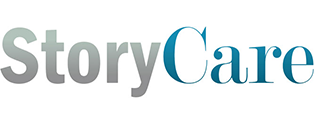103
Student’s Guide – You’re Part of Our Care Team Now
Overview: During a routine delivery, the baby is unresponsive requiring resuscitation and a transfer to the neonatal intensive care unit. Prior planning and coordination are essential for successful handoffs in emergent situations.

Primary Learning Outcomes After completing this lesson, you should be able to:
- Summarize information that should be included in a pre-delivery team briefing for staff, the patient, and family.
- Describe strategies and methods to ensure safe, timely, and closed-loop handoffs between units especially during emergent situations.
- Describe strategies to improve communication between team members, patients and families.

QSEN Pre-Licensure Competencies The following QSEN competencies are addressed in this lesson:
- TeamWork and Collaboration:
- Function effectively within nursing and inter-professional teams, fostering open communication, mutual respect, and shared decision-making to achieve quality patient care.
- Evidence-Based Practice (EBP):
- Integrate best current evidence with clinical expertise and patient/family preferences and values for delivery of optimal health care.

QSEN Teamwork & Collaboration Enrichment TeamSTEPPS Best Practice: Check-Backs
- Team Strategies to Enhance Performance and Patient Safety (TeamSTEPPS) is an evidence-based set of teamwork tools, aimed at optimizing patient outcomes by improving communication and teamwork skills among health care professionals.
- A check-back is a closed-loop communication strategy used to verify and validate information exchanged. The strategy involves the sender initiating a message, the receiver accepting the message and confirming what was communicated, and the sender verifying that the message was received. Typically, information is called out anticipating a response on any order which must be checked back.
Story Directions: As you listen to and read the story, think about the things that the team members did well, and the things you think could lead to errors. Also, consider the questions below as you listen.
Reflection Questions:
- Describe the information that could have been included in a pre-delivery briefing for the team, patient and family that could have alleviated some stress in this story?
- How were check-backs used appropriately in this story to ensure safe, timely, and closed-loop handoffs between units? How could they have been used more effectively?
- Which staff member do you believe was the most responsive to the needs of the patients and in this story? Why?
